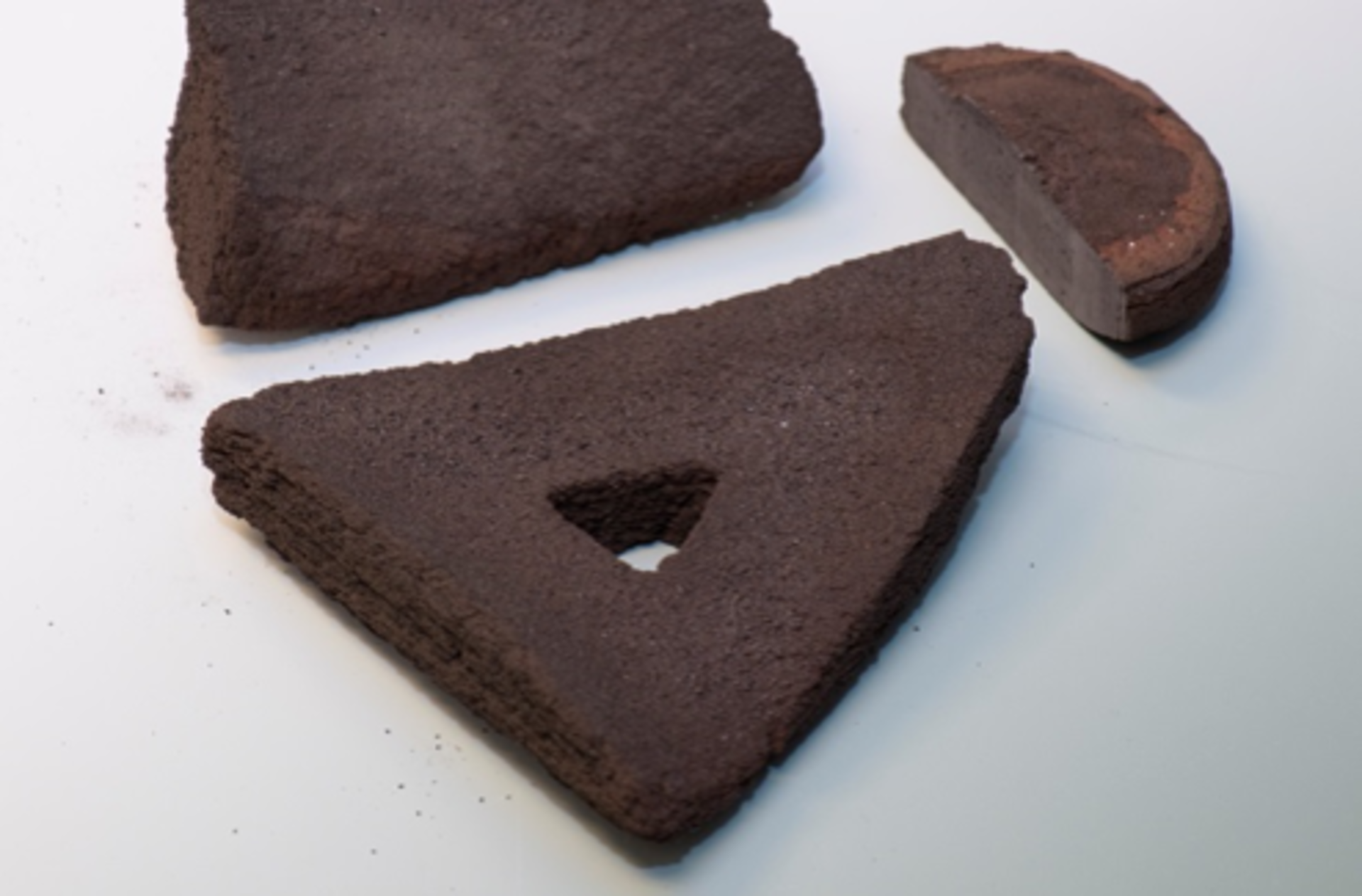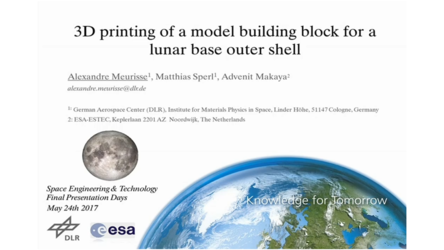3D printing of a model building block for a lunar base outer shell
| Programme: | GSTP | Achieved TRL: | 4 |
| Reference: | G617-153QT | Closure: | 2017 |
| Contractor: | DLR (DE) | ||
This activity is aimed at developing an additive manufacturing process to transform lunar regolith into a construction material, using only concentrated solar energy, without involving any binder. This is intended for applications in the construction of lunar settlements using in-situ resources.
Objectives
The objective is to develop a 3D-printing process for sintering lunar soil simulant with the use of concentrated solar energy. The intended first result is the production of brick-sized model building blocks of a lunar base outer shell. This includes process parameter optimisation and characterisation of the lunar soil simulant and the consolidated materials.
Achievements and status
- An experimental setup for additive manufacturing of lunar regolith simulant by concentrated solar light has been built. The process has been demonstrated on lunar regolith simulant using a solar furnace and a solar simulator.
- The influence of process parameters (substrate, scanning pattern, scanning speed) on the structure of the sintered regolith material has been studied.
- Several lunar regolith simulants have been characterized (composition, granulometry, sintering behaviour).
- The consolidated material has been characterized (structure, thermomechanical properties)
- Three brick-sized demonstrators have been produced.

Benefits
This activity demonstrates the feasibility of a process involving only lunar soil and concentrated solar light to produce a construction material for protective structures in lunar settlements. No binder needs to be brought from Earth.
Next steps
- Follow-up Horizon2020 project ongoing (Regolight).
- Follow-on technology development activity targeted for study of the lunar environment effects on the process performance and the consolidated material.





